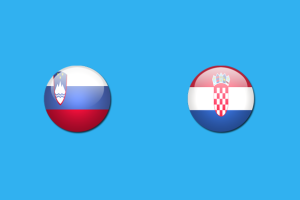Ecommerce in Slovenia and Croatia compared

In both Slovenia and Croatia, there’s been a highly increased frequency of online shopping. Currently, 9 out of 10 internet users in these countries have experience with online shopping. Of course, there are also many differences between Slovenia and Croatia, for example in terms of trust in foreign ecommerce platforms.
On the 5th of April, Ecommerce Day 2017 was held, the largest ecommerce event in Croatia. The conference gathered over 150 experts, who got a glimpse of the new results of another survey by Ceneje on online shopping in the region. This survey, called Shopper’s Mind, was conducted thanks to the answers of 22,000 Slovenian and 22,000 Croatian web users.
According to Ceneje, both countries are in a period of rapid growth among online shopping channels. “The potential of ecommerce, in comparison with other trade segments, is remarkable”, says CEO Darko Dujič. The results of the survey show that in Slovenia, 37 percent of the online population shop online at least once a month, while about 92 percent has shopped online at least once. Statistics are pretty similar in the neighboring country Croatia, but there’s a big difference in the proportion of consumers who regularly shop online every month: almost half of all Croatian internet users do this.
Popular payment methods in Slovenia and Croatia
In Slovenia, cash on delivery is still the most popular payment method. This is due to a long tradition of cash transactions. Currently, about 40 percent of consumers in Slovenia pay by handing over cash when their goods are delivered. However, the use of electronic payments has been increasing in recent years. Almost a fifth of purchases is completed with credit card, which is 12 percent more than the year before. In Croatia, online shoppers are also keen on paying for their goods with cash on delivery, but PayPal is another popular payment method, with almost a third of purchases being paid this way.
PayPal is popular in Croatia, because consumers there use global platforms like eBay and AliExpress a lot. This is also why there is a big difference between the two countries when it comes to the share of purchases at home and abroad. While almost half of Slovenian online buyers shop exclusively at domestic website, this share is just 22 percent in Croatia. On the other hand, 40 percent of Croatian shoppers usually buy their products abroad, while in Slovenia this share amounts to less than a fifth.
Three reasons for rapid ecommerce growth
Cejene has pointed out three major reasons for the rapid ecommerce growth in Slovenia and Croatia. One of them is the expansion of online purchases in product categories that weren’t online a couple of years ago. But there are big difference between fast-growing product categories in both countries. In Slovenia, market share increased the most in online stores in the categories ‘food and beverage’, ‘auto equipment’ and ‘pet accessories’, while in Croatia this happened in the categories ‘group purchases’ and ‘insurance’.
Another key driver of ecommerce growth is mobile, something that’s being recognized by retailers. Last November, 76 percent of online stores in Slovenia had optimized their mobile website. In Croatia, retailers are increasingly aware of the important of a mobile sales channel: this year almost 9 out of 10 online stores have a mobile website, while it was only 60 percent one year ago.
Comparison shopping engines are also becoming more and more popular among Slovenian and Croatian internet users. In Slovenia, over a third of the online population uses these websites to research products before buying them, while in Croatia this accounts for 55 percent of internet users.
Types of ecommerce websites
In both Slovenia and Croatia, five leading online retailers take almost half of the local ecommerce market. But when we take a look at the different types of ecommerce websites, there are some noticeable differences. In Slovenia, online shopping malls lead the pack, as their market share accounts to almost half of the market. They are followed by specialized online retailers and global ecommerce platforms. In Croatia however, specialized online retailers are the leading players, representing over a third of the market. They are followed by online shopping malls and global ecommerce platforms. The latter type of ecommerce website accounts for a fifth of the market in Croatia, while it takes up only one tenth of the Slovenian market. Again, this shows the trust of Croatian consumers towards foreign retailers.
This isn’t the first time we’ve compared the ecommerce industries of Slovenia and Croatia. In 2015 and 2016 we’ve also noted the similarities and differences between these two European countries.

Comments